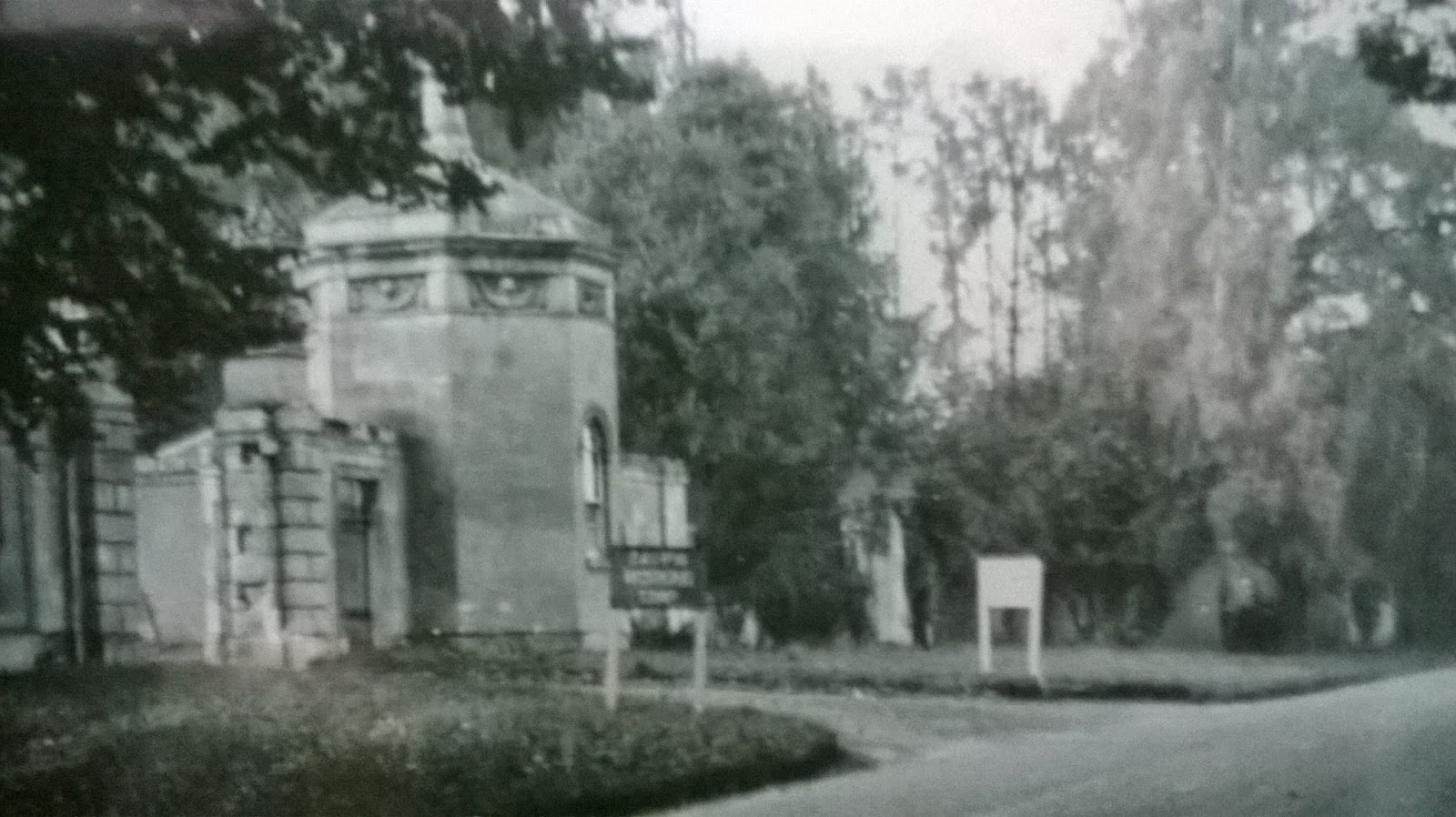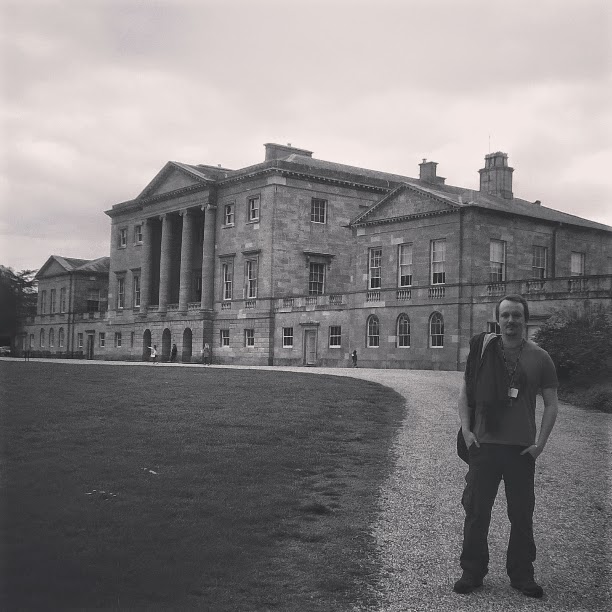A BRIEF HISTORY OF THE BUILDING AND ITS FOUNDER, WILLIAM HEY
BY CRAIG OWEN LEWIS
“It was resolved that in the opinion of the meeting it is expedient to establish a Club in Leeds to be called The Union Club on the principle of those which now exist in some of the large towns in England."
BY CRAIG OWEN LEWIS
“It was resolved that in the opinion of the meeting it is expedient to establish a Club in Leeds to be called The Union Club on the principle of those which now exist in some of the large towns in England."
Notes from the inaugural meeting , 23rd March 1849
Number 3 Albion Place started life in 1820, erected by the prominent Leeds surgeon, William Hey, as residences for his son and grandson. In 1849, when the Leeds Club was founded, gardens and fields bordered Albion Place and the house of William Hey was the only significant building. By the mid 1800’s, 3 Albion Place had been split in to two houses owned by a Mr Martin, which were firstly leased and then, in 1861, purchased by the Leeds Club for the sum £5,300 – a princely £563,000 in today’s money. There then followed various proposals to improve the site and, following a building project, the alterations were reported as complete at the AGM in January 1864.
William Hey served as Mayor of Leeds twice during his life, in 1787-1788 and 1802-1803. He was a devoutly religious man, which was something that had been instilled in him since a young child. This influenced his stance on public morals and his policies during his time as Mayor. For example, he campaigned to ban public drinking and swearing. These strict morals weren’t readily accepted by the general population, however, and it made him quite unpopular as a result. So much so, in fact, that it was known for effigies of him to be burnt in the streets in protest.
"The labours have been great and the result of them
has provided one of the best club houses in the country."
Notes from the minutes of the AGM, 1864
William Hey served as Mayor of Leeds twice during his life, in 1787-1788 and 1802-1803. He was a devoutly religious man, which was something that had been instilled in him since a young child. This influenced his stance on public morals and his policies during his time as Mayor. For example, he campaigned to ban public drinking and swearing. These strict morals weren’t readily accepted by the general population, however, and it made him quite unpopular as a result. So much so, in fact, that it was known for effigies of him to be burnt in the streets in protest.
“Dear Sir;
I hope you will
excuse me for mentioning to you , that, in the conversation which we had this
morning, on an important political subject, you repeatedly used the sacred name
of the Almighty as a mere expletive, -- (Good God!) And allow me to submit to
your consideration, whether such a use of that name is not forbidden by the
Third Commandment.
I am yours,
respectfully,
William Hey”
This letter was written by William Hey to, assumedly, a
colleague or peer. A great example of the seriousness in which he took his
faith – and to what degree he expected others to whilst in his presence.
William Hey (23rd August 1736 - 23 March 1819) - founder of 3 Albion place, the site of The Leeds Club. He was a prominent Leeds surgeon and philanthropist. Here you can clearly see the wound that afflicted his right eye which was the result of a pen knife injury that occurred when he was a child. He is seen here clutching the Holy Bible, which, given his firm religious beliefs, is no surprise. The view from the window is also evidence of how green and spacious this part of Leeds was at the turn of the 19th century. The view is probably from his house located two doors up from The Leeds Club at number 1 Albion Place. The engraving dates to 1816.


This portrait by William Allen was commissioned in 1816, around the same time as the bust of him below was created. He is seen to be examining a child from the estate of Harewood, who has a broken clavicle. The lady pictured is Lady Harewood of Harewood House, who is supposedly bringing him the child to test his reputation for treating every patient equally, regardless of social standing or class.
This bust of William Hey, commissioned by his close friend Mr Armley, was commissioned a few years before he died at the age of 83. It was sculpted by George Bullock, sculptor and cabinet maker of Liverpool in roughly 1815. In 'The Life of William Hey' (1822), it is noted that "Mr. Gott was desirous of possessing a bust of Mr. Hey, but had some fears that he might not obtain the object of his wishes if he allowed his friend time for deliberation. The late Mr. Bullock, an artist of eminence, was introduced to Mr. Gott, who said, in an easy and familiar manner, to Mr. Hey, 'I shall be obliged to you if you will permit the gentleman who is with me to take a cast of you; come, sit down, it shall be done now; it will require a few minutes only.' No time being allowed to Mr. Hey for consideration, the cast was taken...".
"[The Leeds Club is] conveniently situated in Albion-Place, Albion Street, and contains handsome coffee, smoking and dining rooms, drawing or reading, and writing rooms, spacious billiard room, excellent kitchens, lavatory, bedrooms, bathrooms etc, and is beautifully furnished and decorated, but still it has an air of domestic comfort, whilst it may almost vie with any club house out of London. This institution is found to be very convenient to the gentry of the neighbourhood, who have occasion to visit Leeds, and is also much frequented by the merchants, and professional gentlemen of the town."
In 'An historical guide to Leeds and its environs; with a plan, etc', written by T Fenteman & Sons in 1858, The Leeds Club is described as being 'beautifully furnished and decorated'.
There are many things that make the Leeds Club
building a beautiful example of Georgian architecture. For example, the great
staircase that dominates the heart of the building, topped in a gilded glass
dome sky-light. However, some features are particularly special. In The Leeds Room, for
example, are two marble fireplaces which, whilst quite possibly original to
the building, certainly date to at least 1834. Adorning the top of the
fireplace underneath the mantelpiece is a crest which, at first glance, is
identical that of Leeds city council. However, it is missing a very familiar
addition to today’s coat of arms – that is, the owls which are seated both
either side and above the coat of arms are missing. This is because the
familiar Leeds owls haven’t always been part of the city’s coat of arms. They
were only added in 1835. This makes the fireplaces in the Leeds Room some of the most unique, important and possibly oldest, in Leeds.
The owls, which are familiar today, originate from the coat of arms of Sir John Savile who was appointed the first Alderman of Leeds by Charles I in 1626. The three stars are taken from the coat of arms of Sir Thomas Danby who was the first Mayor of Leeds, under Charles II, in 1661. The sheep being weighed is reference to the woollen industry which was one of the main industries that made early Leeds prosper. The motto, "Pro Rege Et Lege", is latin for "For King and the law". Its motto is similar to the original used by the Australian capital of Canberra which was granted its own arms in 1928.
One of the most iconic symbols of the Leeds Club
is without doubt our stunning chandeliers. These dominate most of the ground
floor of the building and really give a sense of the kind of atmosphere that
would have permeated the gentleman’s club in its heyday. All together there are
8 chandeliers and 3 wall sconces totalling 130 light bulbs. Even today candles
aren’t incredibly cheap. Imagine over 100 candles being burnt on a daily basis.
Only the best was provided for the social elite of Leeds.
The chandelier in the foyer of The Leeds Club building. Whilst the chandelier itself is easily appreciated, the plaster medallion which it hangs from is equally as pleasing to the eye.
When you walk in to
the Leeds Club foyer you are greeted, not only by these shimmering chandeliers,
but also by a colourful mosaic tiled floor paired with Corinthian gilded
columns adorned with gold leaf. The most amazing thing about the floor is that
it was rediscovered whilst renovation work was carried out in the beginning of
the millennium. It had been covered, and as such preserved, under an old red
carpet. Today it has been restored and returned to its former glory for all
guests and visitors to appreciate.
As
well as all these attractive features, the Leeds Club building also boasts the
oldest toilets in Leeds. The Gentleman’s cloak room is fitted with original
mahogany toilet seats, marble urinal divides and sinks, a fire place, and other
features such as shoe shining facilities. These are all legacies of the old
English Gentleman’s club. Ladies unfortunately don’t have similar
luxuries, with their toilets being modern installations added at a much
later date. Originally, The Leeds Club would have had a variety of rooms suited
for different purposes including coffee, smoking and dining rooms, a billiard
room, bedrooms and a ballroom. Only a few of these rooms are still recognisable
today. However, many of their original features remain. With 13 rooms
available in total, 5 of which are fully modernised, the most popular use of
the venue today is for wedding receptions and business meetings and
conferences. Since The Leeds Club reopened its doors to the public in 2013, it
has gained a new lease of life and enjoys business from all over the country. Although
sad that The Leeds Club is no longer a gentleman’s club, in order to preserve
the fabric of the building, opening it to the general public means that now
everyone has the pleasure of enjoying the beautiful surroundings within. It
also gains the crucial revenue that is needed to help preserve The Leeds Club
for hopefully another 150 years and in to the future.
The Corinthian columns are another attractive feature of The Leeds Club foyer. The Corinthian style is considered to be the most decorative form of Graeco-Roman architecture. These columns, and the friezes above them, are similar to those at the Parthenon in Greece. This style of architecture was very popular in the late 1700's and early to mid 1800's. Particularly, the contrast of pastel colours, such as the green of the columns, against more bold colours, such as the real gold leaf.
 |
| This sketch, based on a section of The Pantheon, in Rome, is evidence of the influence that Graeco-Roman architecture had on The Leeds Club building, and the styles of the era. |






































